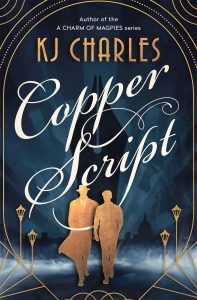The Halloumi Book (or where ideas come from redux)
For everyone who ever asked “Where do you get your ideas?” and “How do you come up with a plot?”
I have written on various occasions about weird things that sparked book ideas. (A common phrase that sounded like a good title. A toddler’s question. A random assortment of fridge magnets in the sequence ‘feximal’. A bizarrely phrased line in an Amazon review.)
The idea, however, is nothing. Ideas are ten a penny: turning them into a plot with characters is the tricky part. (See this blog post for how a long-forgotten list of weird names gave me an idea that became a character that suggested a plot.) That’s only a fraction of the amount of work that a complete book takes, as you build out your characters and weave in your subplots and make it all hang together. Books don’t just turn up in your head fully formed.
Usually.
Except.
So look, this is what happened.
I have been brewing an idea for ages. It’s a great idea, a premise with a really unusual period setting and a ton of potential, but I can’t find a way to make it a book. (See above: ten a penny.) However, back in October I was due to start the next book so I thought it was time to make this one happen. I watched a really bad movie with the setting, read a couple of relevant old thrillers, got technical books hoping for the factoid that would give me the ‘but what if?’ moment, and set to work one Monday morning. I tried out a couple of premises, a couple of different decades to set it in, spent a couple of hours noodling. Didn’t get anywhere.
Fine, I thought. I’ll go to the shops. A bit of a walk usually shakes something loose, and anyway we’re out of halloumi. (I live in North London and have a vegetarian daughter, don’t @ me.)
For what then happened, I will quote my Bluesky posts.
10.13am Been working on an idea for ages. Did a ton of research, watched a relevant and absolutely terrible movie just for the backdrop, you name it. Can’t quite nail the plot. Went to the shops while I thought about it. Came back with halloumi, limes, and a full plot… FOR A COMPLETELY DIFFERENT BOOK.
2.32pm I am sorry to report that I’ve just written a one-page synopsis laying out the whole premise, with character sketches and the first two thirds of the plot in detail. In four fricking hours. (I will probably need to get more halloumi to finish the last bit.)
4.00pm …I’ve written the first scene. JFC.
[four days later] look not being funny but I got hit round the head with this new idea on Monday lunchtime, and it’s now Friday afternoon and I have 16,000 words of what we are now calling the Halloumi Book.
The characters evolved as I wrote, of course, and became rounded, and acquired more trauma because me. I tinkered with the plot mechanics, adapted it and filled it in. But the opening scene is still exactly as I wrote it on Halloumi Day, the characters who appeared in outline then are the same people they are now, the villain and the premise and the mystery and the resolution are all what came to me somewhere between “For God’s sake, we can’t be out of halloumi again” and standing in the Broadway Food Centre staring slack-jawed at the squeaky cheese shelf.
So, KJ, I hear you say, how the bobbins did that happen and how can I get some?
Mate. If I knew how to repeat that, I wouldn’t be putting the secret in a free blog: I’d sell it for five grand a pop and retire by Christmas. However, since I don’t, here are my thoughts
1) Have ideas to handThe premise of the Halloumi Book is of Joel, a bizarrely talented graphologist who can read character and emotion from people’s handwriting. As it happens, my grandmother was, in addition to being a nationally recognised artist and a bestselling children’s author, a bizarrely talented graphologist. My mother, a scientist and sharp thinker, would routinely get her to read hands of difficult colleagues, and she always provided useful info; one of Joel’s more startling graphological insights in the book is taken directly from a real incident.

This may sound weird. (OK, it does sound weird.) I can only assure you that it was a bog-standard family fact: Granny lives down the road, puts nettles and speedwell flowers in her salads, reads handwriting, and will make you sit for a painting if you stay still for more than thirty seconds so watch out. Granny reading handwriting was a given of my life, not an exciting idea I was actively considering—though I do recall my mum telling friends about it in, ooh, August. Did that put it into my mind to pop up two months later, even as I was finishing another book and actively planning a third? Seems unlikely, but here we are.
Obviously you can’t bet the farm on Granny. But the more you read, the more you let people tell you stuff and listen and open yourself to people’s stories and the whole wonderful variety and weirdness of the world, the more material you have for your subconscious to ferment.
2) Practice makes plotI reiterate again: ideas are ten a penny. Anyone can think “bizarrely talented graphologist”: the trick is to make connections from there. To spin off If this, then that, to ask yourself what is the most difficult, dramatic or otherwise fun thing you could do to your unfortunate character or with that interesting premise.
If I’d been thinking it out consciously, it would probably have gone like this:
Joel is a bizarrely talented graphologist > He can read character in handwritingSuppose he read the handwriting of a highly regarded man and saw he was a murderer?If there’s a murderer we need a detective. And the detective must surely be a sceptic, for conflict.So a sceptical policeman and a graphologist join forces to track down a murderer when they have no evidence of the crime, and fall in love…And this was the very much the basic shape that my subconscious delivered me (along with a lot more stuff I’m not sharing because spoilers). But all of it extrapolated neatly from ‘bizarrely talented graphologist’ much as I’d have done if I’d been thinking ‘bizarrely talented graphologist’–which I cannot sufficiently reiterate that I was not.
I still can’t tell you what triggered that idea to become a plot. But it was in my head somewhere and I think my subconscious could plot it without conscious intervention because I’ve written 35 or so novels and I’ve simply got used to the process of spinning out ideas. Ever driven home on a familiar route and realised you’ve got no memory whatsoever of the preceding ten minutes in which you repeatedly changed gears, took junctions, and negotiated your way around other road users? Like that.
Not magic, not muses, just practice. Sorry.
3) Buy more halloumiIDK, it worked for me.
The Halloumi Book is called Copper Script, and I’m self publishing it on 29th May. The gorgeous cover is by James Egan of Bookfly Design, and it will be available in print and e initially; audio rights have been sold so watch this space.
Preorder here.
Goodreads here for early reviews.

Detective Sergeant Aaron Fowler of the Metropolitan Police doesn’t count himself a gullible man. When he encounters a graphologist who deduces people’s lives and personalities from their handwriting with impossible accuracy, he needs to find out how the trick is done. Even if that involves spending more time with the intriguing, flirtatious Joel Wildsmith than feels quite safe.
Joel’s not an admirer of the police, but DS Fowler has the most irresistible handwriting he’s ever seen. If the policeman’s tests let him spend time unnerving the handsome copper, why not play along?
But when Joel looks at a powerful man’s handwriting and sees a murderer, the policeman and the graphologist are plunged into deadly danger. Their enemy will protect himself at any cost–unless the sparring pair can come together to prove his guilt and save each other.



